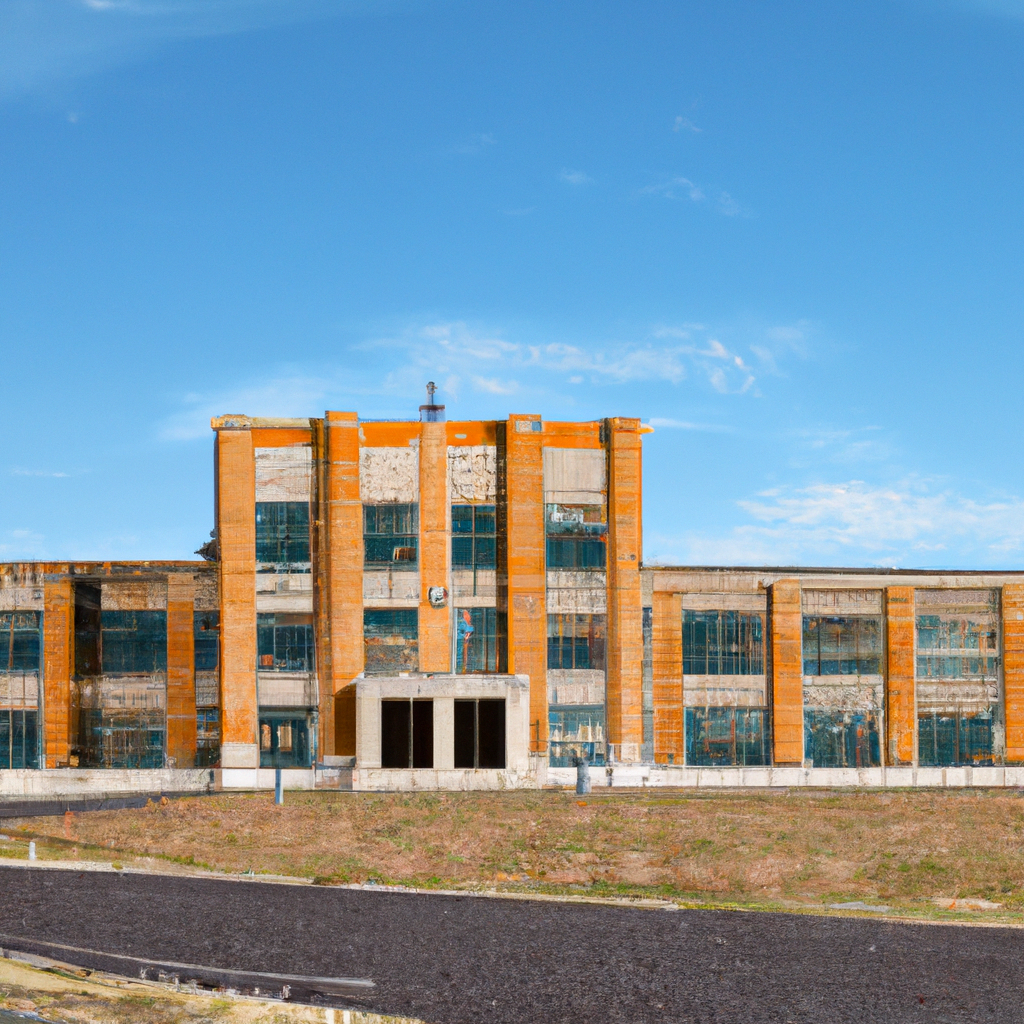Why Most Oklahoma Rural Hospitals
The tale of the Oklahoma rural hospitals is one of great distress. Since 2007, 33 hospitals in Oklahoma have closed down, 12 of them in rural communities. This, combined with the financial strain, has led to hospitals struggling to provide the necessary services to their communities. As Congress issued an offer to save them, one can only wonder why most Oklahoma rural hospitals refused it. To explore this, one must look into the various factors that militate against this offer’s acceptance. [[1](https://www.healthleadersmedia.com/finance/why-most-oklahoma-rural-hospitals-haven%E2%80%99t-accepted-congress-offer-to-save-them)][[2](https://kfor.com/news/local/oklahoma-senator-files-bill-to-provide-relief-for-rural-hospitals/)] [[3](https://www.newsbreak.com/perry-ok/3094580531461-why-most-oklahoma-rural-hospitals-haven-t-accepted-congress-offer-to-save-them)]. Although a difficult situation, delving into it, one can see that there are solutions to this problem.

Table of Contents
- Headings:
- 1. Overview of Oklahoma’s Rural Hospital Crisis [[1](https://www.newsbreak.com/perry-ok/3095821314105-why-most-oklahoma-rural-hospitals-haven-t-accepted-congress-offer-to-save-them)]
- 2. The Affordable Care Act’s Impact on Rural Hospitals [[2](https://flipboard.com/topic/oklahoma/why-most-oklahoma-rural-hospitals-haven-t-accepted-congress-offer-to-save-them-/f-f2a3a4ef78%2Foklahomawatch.org)]
- 3. Oklahoma’s Road Ahead [[3](https://www.wdnonline.com/index.php/news/why-most-oklahoma-rural-hospitals-havent-accepted-congress-offer-save-them)]
- 4. Preparing for the Future of Rural Health Care in Oklahoma
- Q&A
Headings:
Headings are the most important elements of your web page. They help readers quickly scan and understand its contents. For readers to be able to parse your content effectively, it is essential that you use headings the right wa yWhy Most Oklahoma Rural Hospitals.

1. Overview of Oklahoma’s Rural Hospital Crisis [[1](https://www.newsbreak.com/perry-ok/3095821314105-why-most-oklahoma-rural-hospitals-haven-t-accepted-congress-offer-to-save-them)]
Oklahoma’s rural hospitals are facing a crisis. With many facilities closing or reducing services, it has become increasingly difficult for rural patients to access the necessary healthcare they need.
The primary source of this crisis is a lack of funding. Despite Congress offering financial aid to rural hospitals, many of these facilities have yet to accept the aid due to varying reasons such as:
- Mismanagement of resources.
- Excessive regulations.
- Insufficient cost-savings.
- Increasing costs of providing healthcare services.
This crisis has had a significant impact on the rural healthcare system in Oklahoma. Many of the state’s rural communities are now dependent on their regional hospitals, which are unable to adequately meet the needs of their populations. Furthermore, the state’s inability to financially sustain rural hospitals has resulted in reduced access to crucial services such as primary care, emergency services, and preventative care. This has forced patients to either seek medical attention in an urban facility or go without necessary treatment.
2. The Affordable Care Act’s Impact on Rural Hospitals [[2](https://flipboard.com/topic/oklahoma/why-most-oklahoma-rural-hospitals-haven-t-accepted-congress-offer-to-save-them-/f-f2a3a4ef78%2Foklahomawatch.org)]
The Affordable Care Act (also known as the ACA or Obamacare) came into effect in 2010 and has drastically affected the medical landscape in rural and remote areas of the United States. Since its passage, hospitals in rural areas have noticed a mixed bag of impacts—both positive and negative—due to the legislation.
Positive Impacts
- Health insurance coverage has increased in rural areas and fewer rural residents are choosing to remain uninsured.
- The ACA expanded Medicaid coverage for low-income individuals, allowing those who previously would have struggled to afford care access to health care.
- The ACA also increased access to telehealth services, which is especially helpful to rural hospitals who have limited access to specialist care.
- Rural healthcare workers are supported through the Health Workforce Scholarship Program, which helps them train and specialize in order to provide better quality care.
- Increasing reimbursements from higher insurance uptake has had a positive impact on many rural hospitals.
Negative Impacts
- Reimbursement cuts to Medicare and Medicaid services have resulted in cost-saving measures to help rural hospitals stay afloat.
- Rural hospitals have been particularly hard-hit by the cost of medical supplies which saw a sharp increase in 2015.
- Close-knit communities in rural areas are faced with the decisions of whether or not to close their local hospital in the wake of heavy financial burden.
- Many rural areas are faced with an acute shortage of primary care physicians, leaving hospitals with no choice but to skimp on providing services.
- The lack of training and resources in rural areas has led to poorer overall health outcomes for citizens in these areas.
The ACA’s impact on rural hospitals has been a complex one, with some positive effects making up for the lack of long-term economic benefit. Despite the mixed bag of results, the law has undeniably had an impact on rural healthcare in both good and bad ways. However, it remains to be seen whether or not the ACA will lead to any real improvements for rural hospitals in the future.
3. Oklahoma’s Road Ahead [[3](https://www.wdnonline.com/index.php/news/why-most-oklahoma-rural-hospitals-havent-accepted-congress-offer-save-them)]
Healthcare in Oklahoma
Additionally, Oklahoma has also taken steps to solidify the state’s healthcare system, as evidenced by the launch of the Public Health, Rural and Underserved Communities (Online) program provided by Oklahoma State University. This program ensures that medical professionals have the tools to take care of patients in rural and underserved communities, providing appropriate health
resources to communities who otherwise would not have them. Additionally, the launch of the State Poet Laureate Program, headed by poet Jay Snider, was a step towards encouraging creative solutions to healthcare issues facing rural and underserved Oklahoma communities.
Public Affects
Public healthcare initiatives are essential in making long-term changes that benefit Oklahoma as a whole. As noted by Hon. Ronald Margolis, Representing the American Hospital Association and being the Chief Information Officer at the
University of New Mexico Hospital, public health initiatives can help shape the future of healthcare in Oklahoma while providing beneficial advances for medical technology. Similarly, advances in public health initiatives can lead to greater
access to medical resources in rural and underserved Oklahoma communities, which is beneficial for Oklahoma’s overall health and wellbeing. Public health initiatives can be powerful tools in a state’s overall strategy for improving its healthcare system and providing comprehensive access to medical resources.
4. Preparing for the Future of Rural Health Care in Oklahoma
Strengthening Workforce Development Programs
The Office of Primary Care and Rural Health Development offers robust support for health workforce development in Oklahoma. This includes public health education, workforce training, scholarships, loan repayments, and residencies. It
is also actively working to recruit high-quality healthcare professionals to service rural communities. These programs have demonstrated positive results by providing a healthy flow of healthcare workers who are vital to the success of rural health care providers.
Why Most Oklahoma Rural Hospitals
The Office is also promoting more inter-professional collaborations, which can increase the effectiveness of care delivery as well as reduce the pressure on individual practitioners. This includes multi-disciplinary, community-based integration of medical and social services.
Maximizing Use of Telecommunications Technology
To enhance access to care for rural areas, Oklahoma is relying heavily on telecommunications technology. Government agencies have leveraged partnerships with private companies to expand telecommunication infrastructure in rural areas, enabling providers to access health records and connect with
specialists remotely. This helps bridge the gaps between rural and urban patient communities, ensuring everyone has access to high-quality healthcare.
It has also enabled rural residents to receive services closer to home, reducing the need for patient transfers while improving continuity of care. Moreover, research indicates that patients within the state are more amenable to consulting
with their primary physician over telemedicine compared to other states.[[3](https://digitalcommons.usu.edu/cgi/viewcontent.cgi?article=1157&context=usupress_pubs)]
In summary, the use of telecommunication technologies helps Oklahoma keep abreast of evolving expectations in healthcare standards, enabling the state to better prepare for future rural healthcare needs.
Q&A
Q: Why haven’t most Oklahoma rural hospitals accepted Congress’ offer to save them?
A: According to [[1](https://www.healthleadersmedia.com/finance/why-most-oklahoma-rural-hospitals-haven%E2%80%99t-accepted-congress-offer-save-them)], many rural hospitals in Oklahoma have been forced to close or
consolidate due to financial strain. The offer from Congress to provide relief has not been accepted by many rural hospitals due to other factors such as the lack of existing sales tax exemption for nonprofit and government hospitals. To provide relief, Oklahoma Senator George Burns R-Pollard filed a Senate Bill 304 to add these interactions to the list of sales tax exemptions [[2]
(https://kfor.com/news/local/oklahoma-senator-files-bill-to-provide-relief-for-rural-hospitals/)]. However, while the bill has been sent for consideration, no decision has been made [[3](https://www.wdnonline.com/news/why-most-oklahoma-rural-hospitals-havent-accepted-congress-offer-save-them)]. Therefore, most Oklahoma rural hospitals haven’t accepted Congress’ offer to save them.
Why Most Oklahoma Rural Hospitals
The future of Oklahoma’s rural hospitals is still uncertain. Despite the efforts of Congressman Lankford and Health and Human Services to offer incentives and create policies to keep them open, most rural hospitals haven’t accepted the offer. [[1](https://oklahoma.gov/content/dam/ok/en/okhca/documents/a0301/21958.pdf)] [[2](https://www.ncbi.nlm.nih.gov/pmc/articles/PMC5606150/)] [[3]
(https://www.lankford.senate.gov/news/press-releases/lankford-leads-the-charge-to-help-rural-hospitals-keep-their-doors-open)] This could have long-term effects on rural communities. It might be too early to tell if the measures taken in the present will pay off for Oklahoma’s rural hospitals in the long run, but any effort to create a lasting solution is welcomed by these communities.




